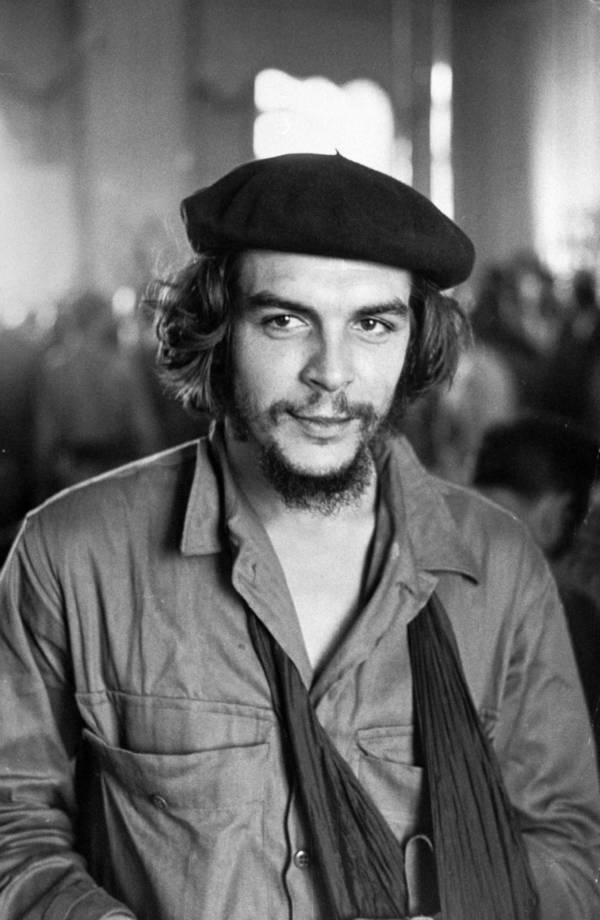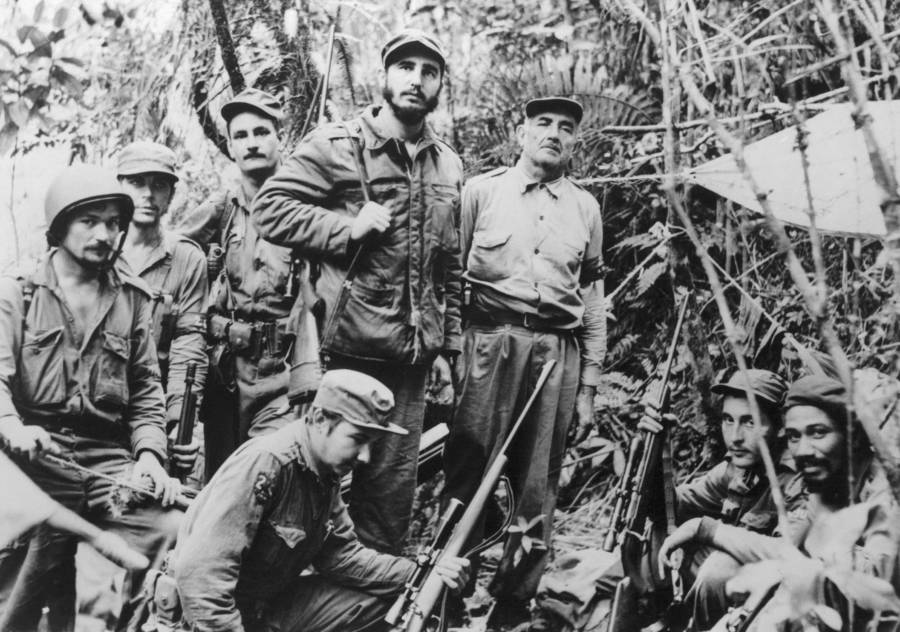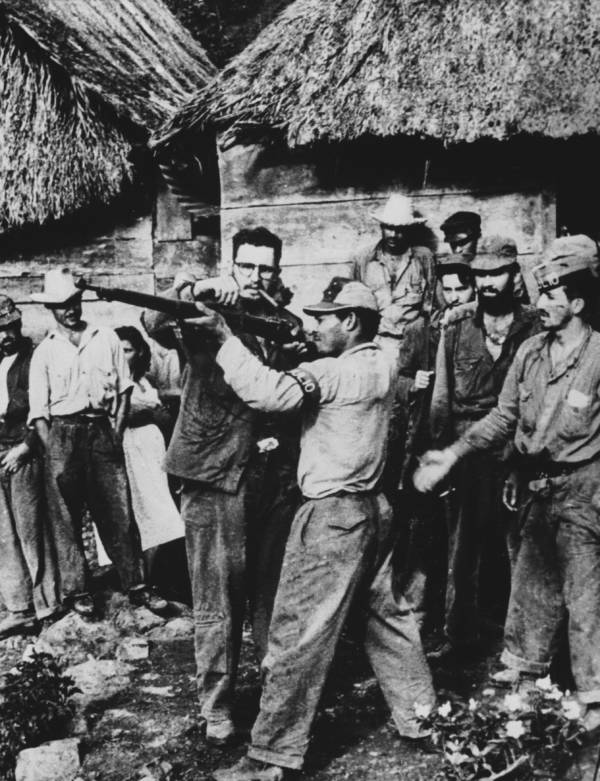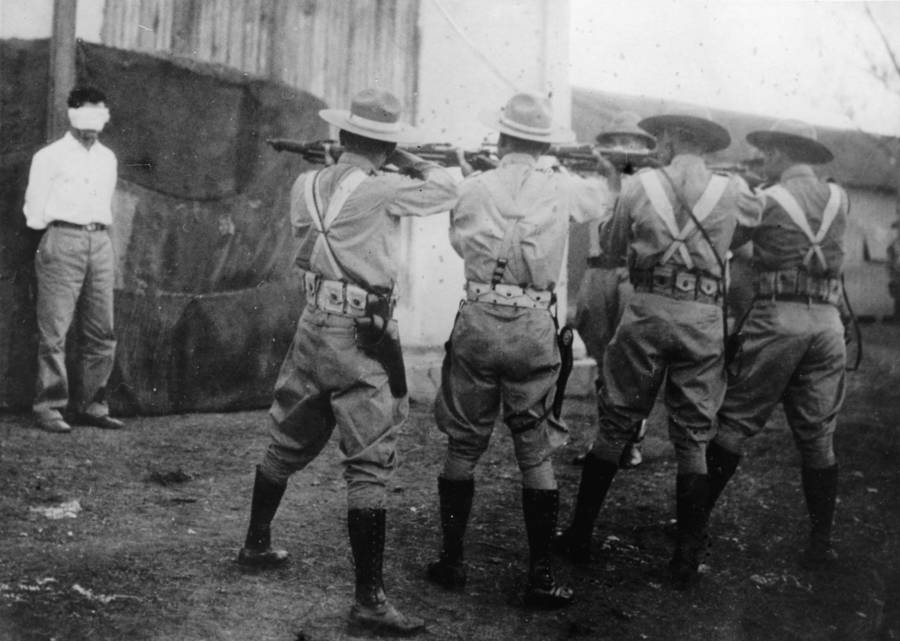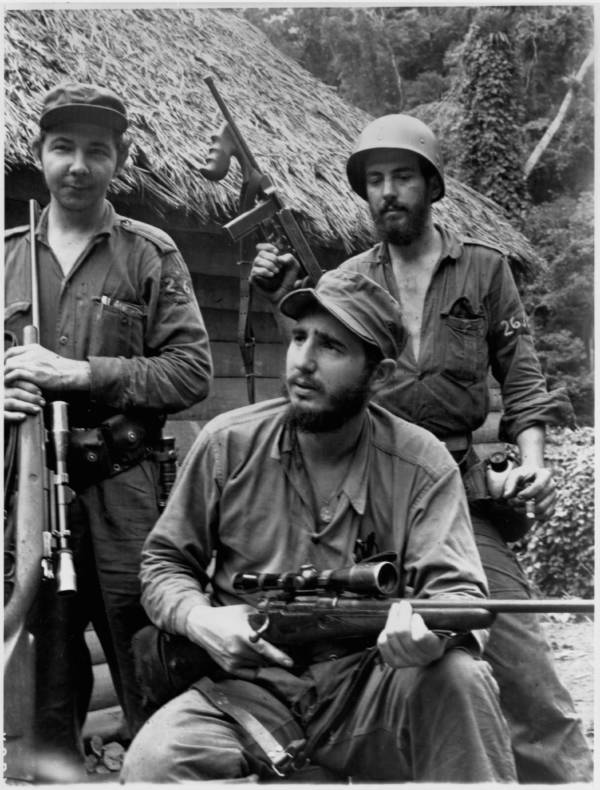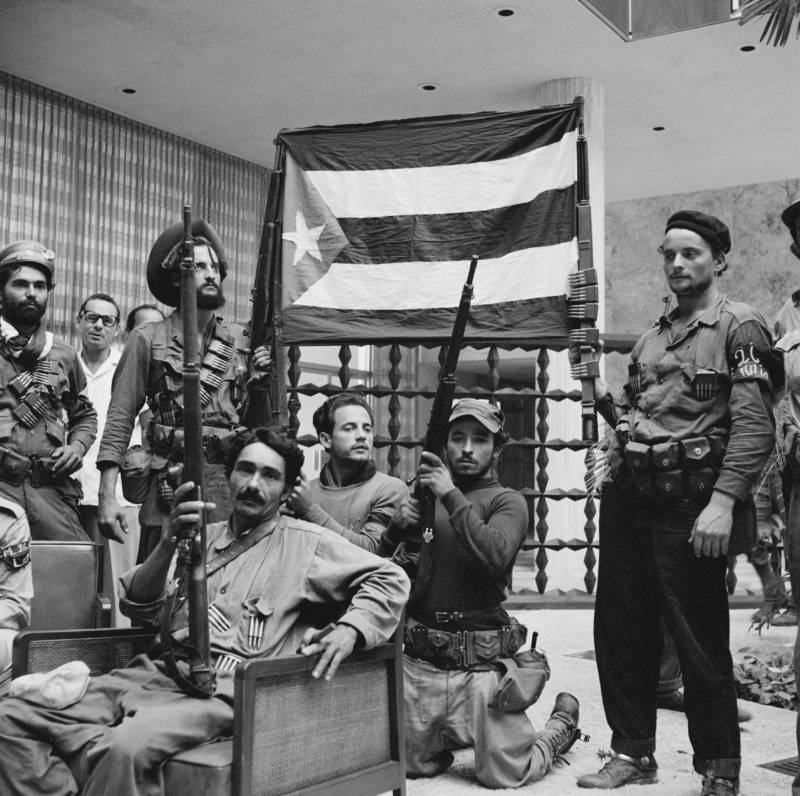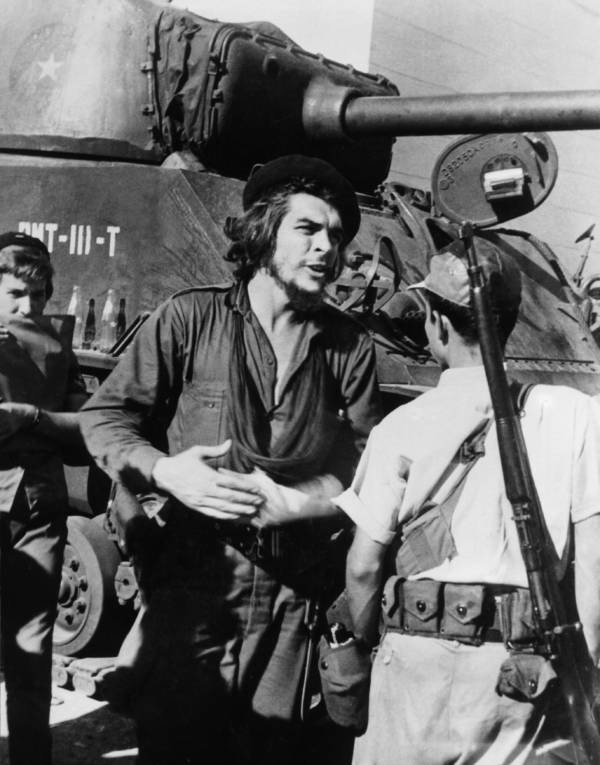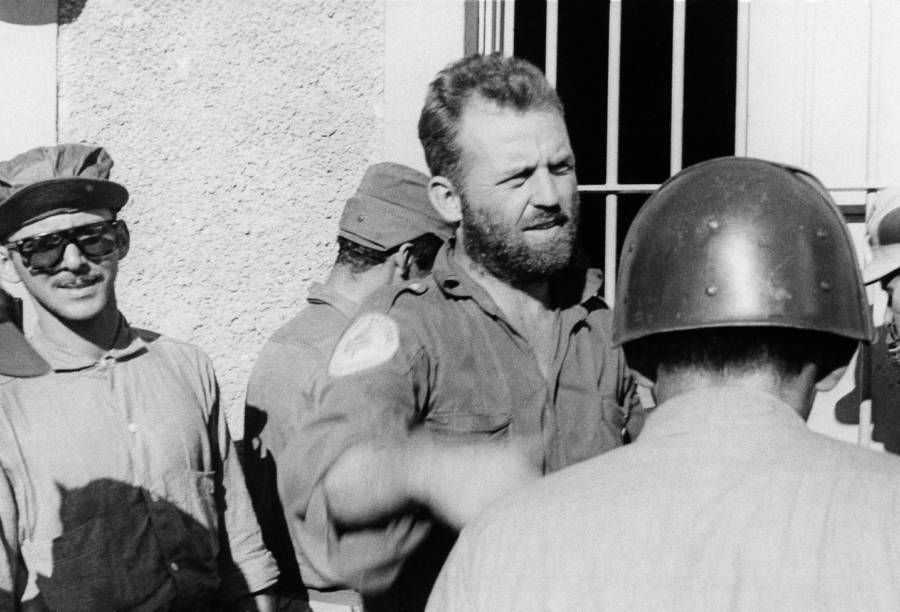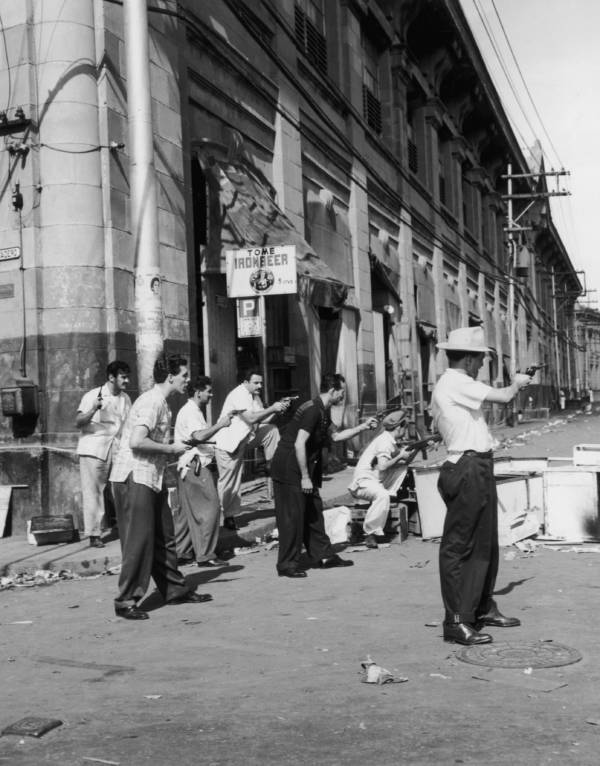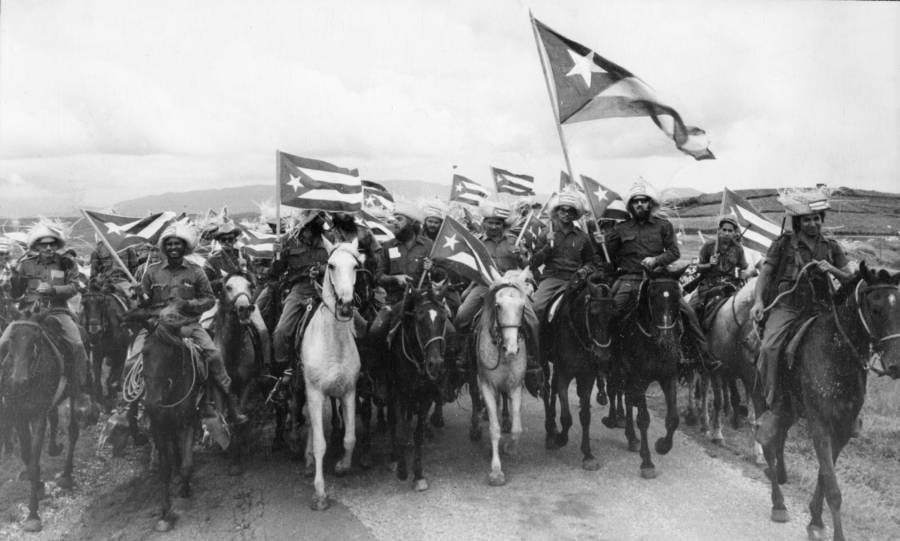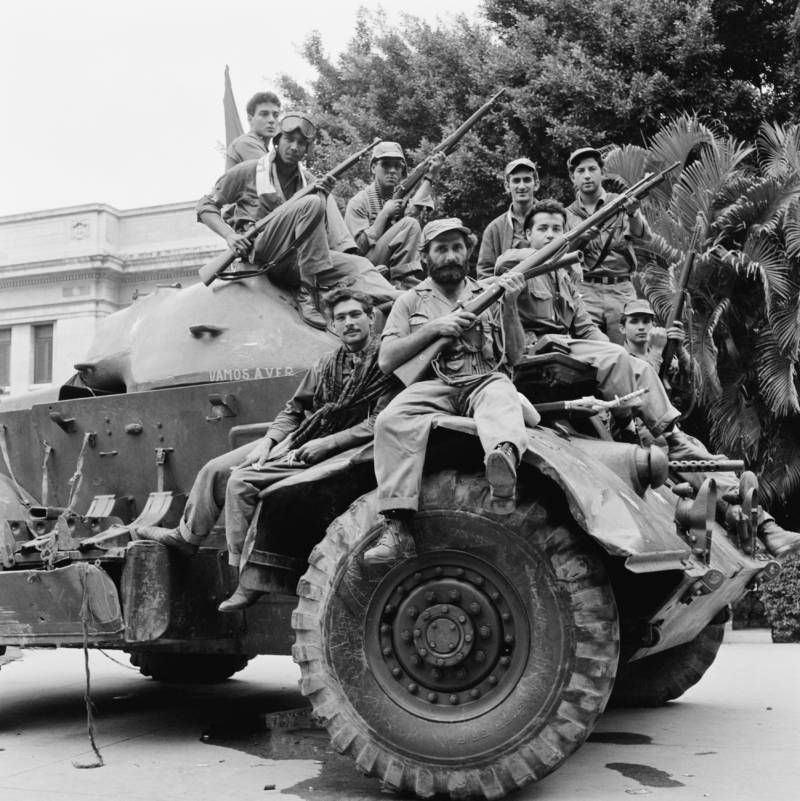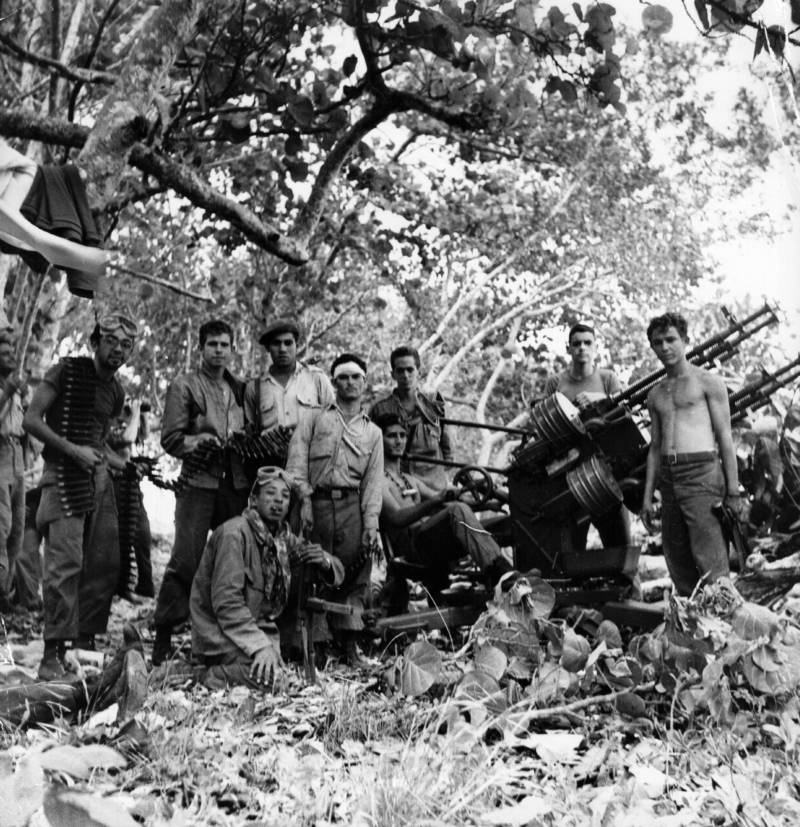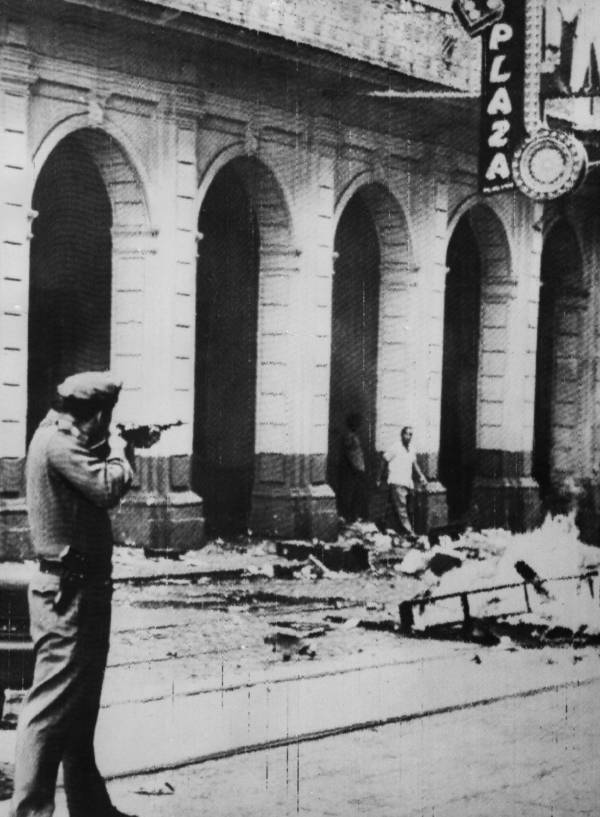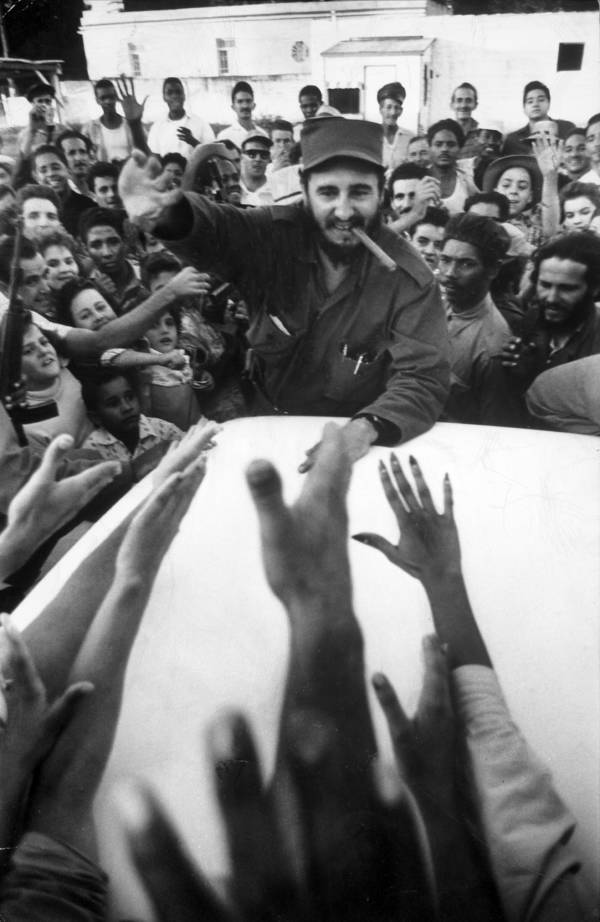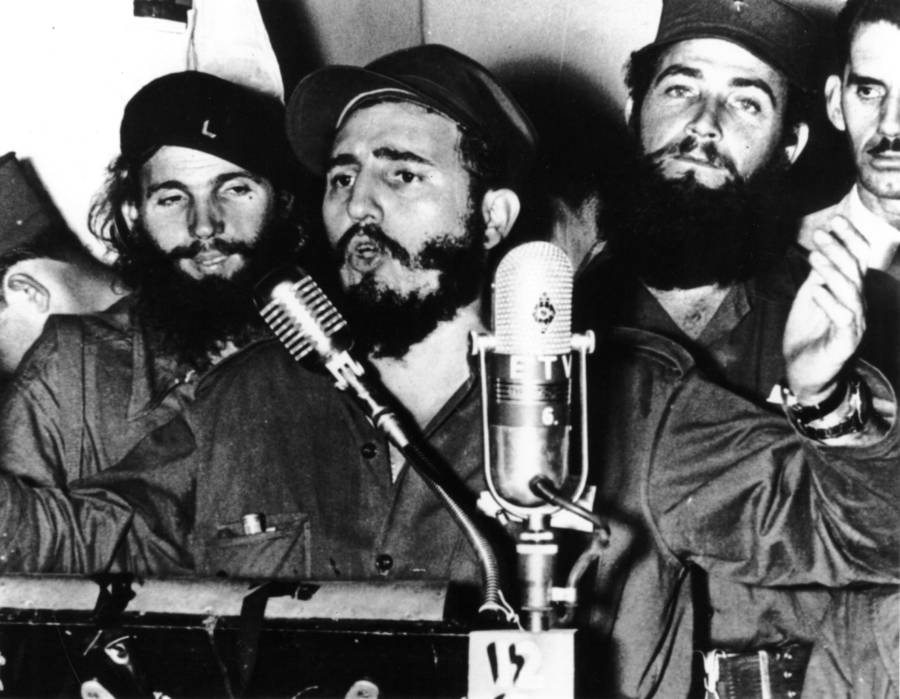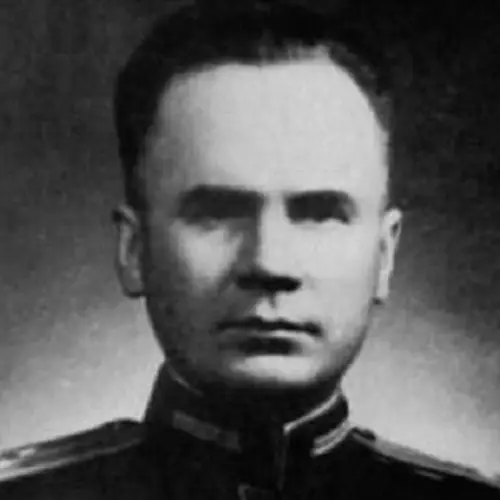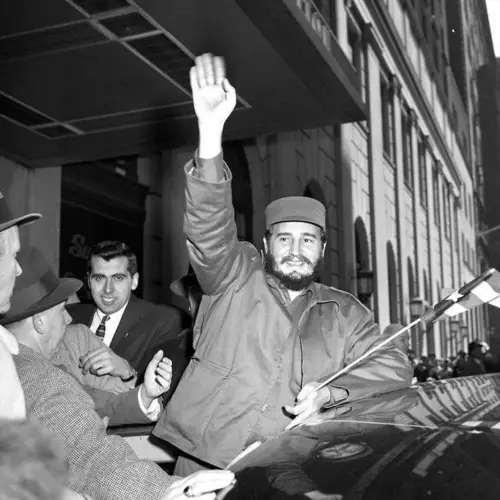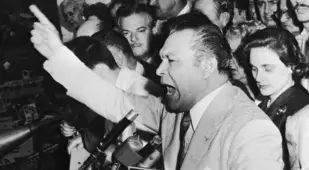To overthrow President Batista's tyrannical government, Fidel Castro led a band of guerilla farmers in the Cuban Revolution — and was successful.
Ten years after the Cuban Revolution, which unseated a tyrant and ushered in Communism, two years since the failed Bay of Pigs invasion, and just one year after the Cuban Missile Crisis, President John F. Kennedy did some reckoning.
"We created, built, and manufactured the Castro movement out of whole cloth without realizing it," he said in October 1963. He felt it was time for America to take some responsibility for Cuba's fate.
That's because 1960s Cuba was an American fear: a burgeoning Communist country that just one year before had helped to put the world on the brink of nuclear devastation. All of that, Kennedy believed, had been put into motion because of America.
Roots Of The Cuban Revolution
Decades before the revolution, the American government armed, funded, and politically supported Fulgencio Batista, the Cuban dictator Fidel Castro would be destined to overthrow.
"There is no country in the world... where economic colonization, humiliation, and exploitation were worse than in Cuba, in part owing to my country’s policies during the Batista regime," Kennedy said. "The accumulation of these mistakes has jeopardized all of Latin America."
In March of 1952, about 16 months before the Cuban Revolution began, Fulgencio Batista seized power in a military coup in which all elections were canceled. Batista had been on the ballot for an election in June and he’d been trailing behind the other candidates in the polls. But that didn’t matter anymore. He installed himself as a dictator and likely expected to rule for life.
"The country went into chaos. Unemployment boomed, the gap between the rich and the poor skyrocketed, and the infrastructure become so neglected that even water was scarce," social analyst Arthur M. Schlesinger Jr., who was hired by the U.S. government to analyze Batista’s regime, wrote in a dire warning he sent to the government.
His warning, however, was ignored. America had instead formed ties with Batista and armed his soldiers in support of his rule in exchange for the chance to profit off of Cuba’s natural resources.
Inequality and corruption were rampant. Cuba’s economy was thriving with a GDP on par with Italy’s, but one-third of the people there lived in poverty.
One man voiced his frustration with more fury than any other. He’d been a lawyer, an activist, and a candidate for Congress in the election that Batista had canceled. Now, with his chance to enter government democratically ruined, he took to the streets and called on the people to overthrow the tyrant Batista.
His name was Fidel Castro.
The 26th Of July Movement
On July 26, 1953, the Cuban Revolution began.
Fidel Castro and a group of about 150 rebels stormed the Moncada Barracks in Santiago. It was the first battle of a war that would change a country - and it ended in disaster.
Castro’s rebels weren’t trained soldiers. Most were farm and factory workers who had banded together in the hope that their revolutionary fervor would make up for what they lacked in training.
This, however, did not happen. The rebels were chased off and nine of their men were left dead and 56 taken as prisoners. Those 56 were tortured and executed en masse on orders that read: "Ten prisoners must be killed for each dead soldier."
Most of those who fled were soon caught as well, including Fidel Castro himself, who was put on trial for instigating the attack.
Castro remained unrepentant. For four hours he ranted to the court about Batista’s crimes of corruption. "I do not fear prison, as I do not fear the fury of the miserable tyrant who took the lives of 70 of my comrades," he told them. "Condemn me. It does not matter. History will absolve me."
He was condemned to 15 years in prison, but his words sparked something in the heart of Cuba. By 1955, he had so much of the public’s support that Batista released most political prisoners.
After a brief stint in Mexico where he met fellow revolutionary Che Guevara and prepared his revolution, Castro and his men returned to Cuba on December 2, 1956.
By then, the Cuban Revolution was already raging, as rebel militias and student protests rose up against Batista across the country.
The Rebels Of The Sierra Maestra Mountains
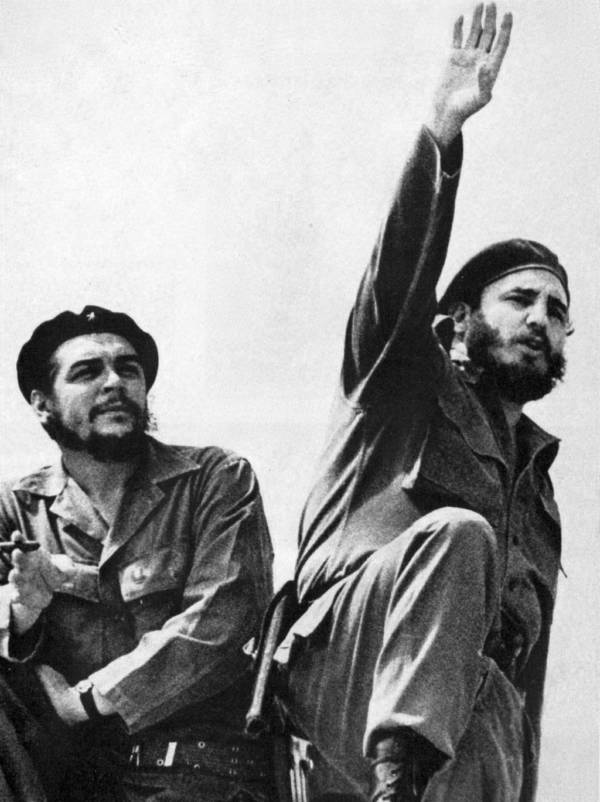
Wikimedia CommonsFidel Castro and Che Guevara, leaders of the Cuban Revolution.
Castro's charisma presented a real threat to Batista’s regime. He and the rebels, who now called themselves the 26th of July Movement, moved through the Sierra Maestra Mountains and used guerilla warfare tactics to harass Batista’s army.
At first, their chances seemed bleak. Castro and Guevara arrived with only 80 others and within days Batista’s army managed to slaughter all but 20 of their group.
The tides turned, however, when the United States once again intervened. Two Americans, an ex-military man named William Alexander Morgan and a C.I.A.-linked gun smuggler named Frank Sturgis offered to train and arm Castro’s men.
Even with American weapons and tactics on their side, the Cuban revolutionaries rarely numbered more than 200 men, but they still they managed to outmatch Batista’s army of 37,000 in battle after battle.
On March 14, 1958, the United States fully abandoned its support of Batista, as they implemented an arms embargo on Cuba which crippled Batista’s resources.
Castro’s final advance began just a few months later on Aug. 21, 1958, when the Cuban Revolution moved down from the mountains and into the cities.
Two columns led by Che Guevara and Camilo Cienfuegos moved into the central provinces where they joined forces with another rebel group called the Revolutionary Directorate Rebels. Together they marched on Batista.
On the first day of the new year, the tyrant fled his palace and left Havana behind.
The Aftermath Of The Cuban Revolution
Castro’s first years of rule were in almost every measurable way an improvement on the days of Batista. Equal rights for women and minorities were ensured, employment skyrocketed, and health and sanitation were reformed.
The change was incredible. By the end of the 1960s, every Cuban child had access to education. During Batista’s reign, less than 50 percent of them had been in school.
For the first few months, the U.S. government supported him if with a little unease. Everything changed in August 1960 when Castro seized all American property in Cuba.
Castro's Threat To America
America, Che Guevara believed, was frightened by what the Cuban Revolution represented. "Our revolution is endangering all American possessions in Latin America," he said. "We are telling these countries to make their own revolution."
On the other side of the Gulf of Mexico, the American press seemed to be confirming his words. "The greatest threat presented by Castro’s Cuba is as an example to other Latin American states which are beset by poverty, corruption, feudalism, and plutocratic exploitation," Walter Lippman wrote in an issue of Newsweek
"His influence in Latin America might be overwhelming and irresistible if, with Soviet help, he could establish in Cuba a Communist utopia."
By April 17, 1961, it was clear that the U.S. government feared Castro enough that they were ready to try to overthrow him.
But that invasion, known as the Bay of Pigs, would fail spectacularly. It would take another two years before John F. Kennedy, the President who approved it, would publicly admit his nation’s role in the trajectory in Cuban politics.
"Batista was the incarnation of a number of sins on the part of the United States," Kennedy said. "Now we shall have to pay for those sins."
Next, check out these incredible photographs of Cuba before the Revolution and learn about the U.S. government's plots to assassinate Fidel Castro.

